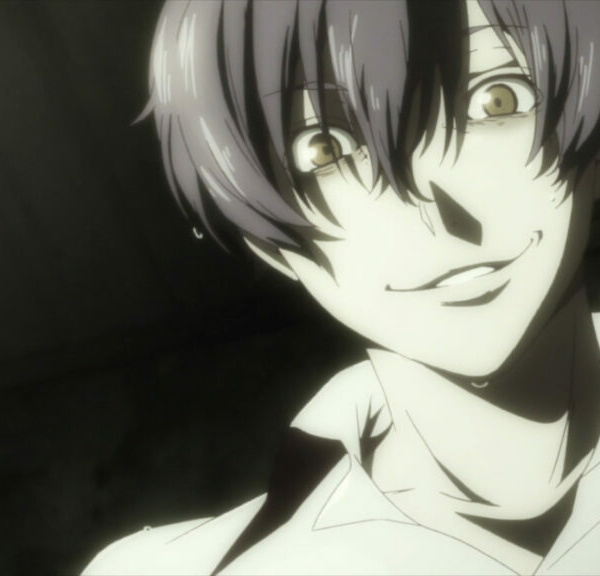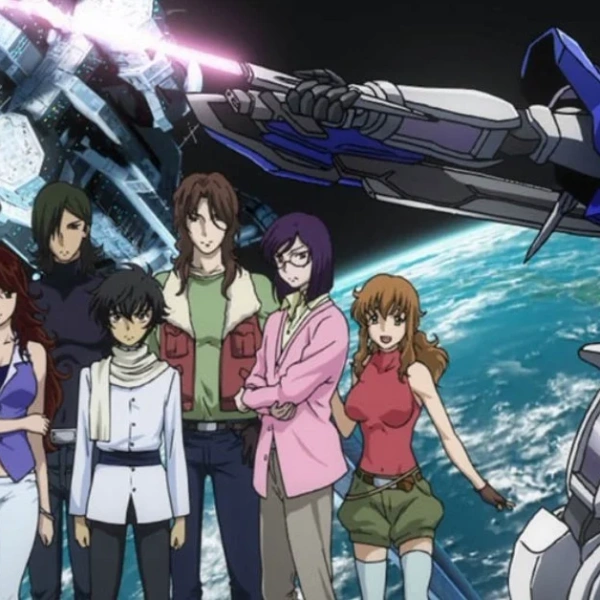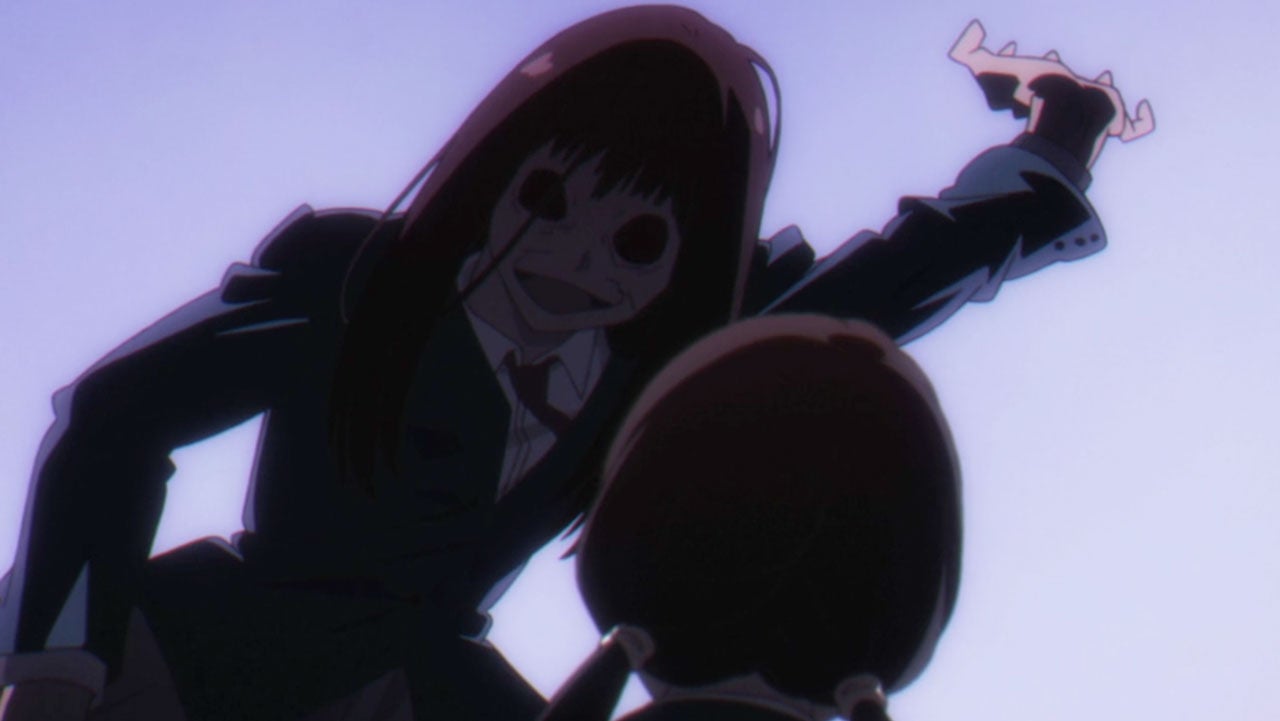
The winter 2022 anime season is in full swing, and the writers at Taped Reality have come together once again to pool our collective anime knowledge into a list of recommendations. This winter is host to quite a few excellent series, but after numerous discussions, we managed to trim the list down to our favorites. Not sure where to start this season? Then this list is for you!
As always, this list is representative of our personal tastes, so we can’t guarantee that your favorite series will be on here. After all, there are differences of opinion among even our collaborators! That being said, we do our best every season to select shows that we think are hitting all the right notes. Everyone who participates in this collaboration loves watching anime and enjoys doing what we do here at Taped Reality. We hope you enjoy reading our thoughts/opinions on these new series.
Winter is upon us and the holiday season comes with it! So it’s time to get cozy, drink hot cocoa…Now, without further ado, here’s our official Taped Related winter sequel guide.
Boogiepop and Others
Genre: Horror/Supernatural/Action/Fantasy/Mystery
Where to Watch: Crunchyroll, Funimation

Spoiler-free Synopsis
“The end of the beginning is also the beginning of the end, Boogiepop.” When a string of female students begins to disappear at Shinyo Academy, rumors begin circulating about a mysterious Shinigami who takes the lives of young girls at the height of their beauty. Some speak of a so-called “Angel of Death” who brings salvation to those in pain. Others describe it as a natural phenomenon that appears whenever the circumstances align as a direct response to abnormalities in our world. Though the details may differ, this phantom does exist, and it has a name: Boogiepop.
Why You Should Be Watching
Based on the light novel series, Boogiepop and Others (2019) is the second anime adaption of the series that more closely follows the original novels as opposed to the anime original storyline of Boogiepop Phantom (2000).
One of the most interesting aspects of the Boogiepop novels is that each story is told non-linearly. Adapting this feature into a visual medium is no easy feat, but Madhouse (of One Punch Man and Overlord fame) stepped up to the challenge by keeping the mystery and suspense intact. This makes it a less casual viewing than most anime, requiring attention to detail and keeping characters in mind as they often re-appear in unexpected ways or the focus shifts to them. Boogiepop, however, succeeds by taking its time in rolling out the purpose for the titular Shinigami’s reappearance on Earth and defining each character’s ultimate role in whatever unnatural phenomenon Boogiepop is investigating.
By retaining the narrative structure of the books, Boogiepop is not afraid to misdirect or confuse its audience for the sake of the larger picture. After one episode, we were completely lost and weren’t sure what we had just watched. To summarize, we follow Keiji Takeda, who sees Boogiepop assisting an odd man on the street. Over the course of the episode, Keiji and Boogiepop begin conversing, the latter mentioning he came looking for a “man-eater” but finds the situation already resolved, prompting Boogiepop to leave soon. We meet a few other characters who make brief appearances, but their significance is held off as the following episodes fill in the missing blanks. There is a lot of “blink and you’ll miss it” moments like this early on, and part of what keeps the show interesting is seeing how side characters in one episode end up contributing to the main story arc.
In what we highly suspect will be one of the season’s most talked-about shows, Boogiepop and Others is a clear standout. Fans of rich, engaging, and complex stories will no doubt feel right at home with this one. While this style of storytelling may not fit everyone’s tastes, Boogiepop is a dynamic and fluid puzzle that rewards those with a penchant for mystery and a touch of the bizarre.
Dororo
Genre: Historical, Action, Fantasy
Where to Watch: Amazon Prime
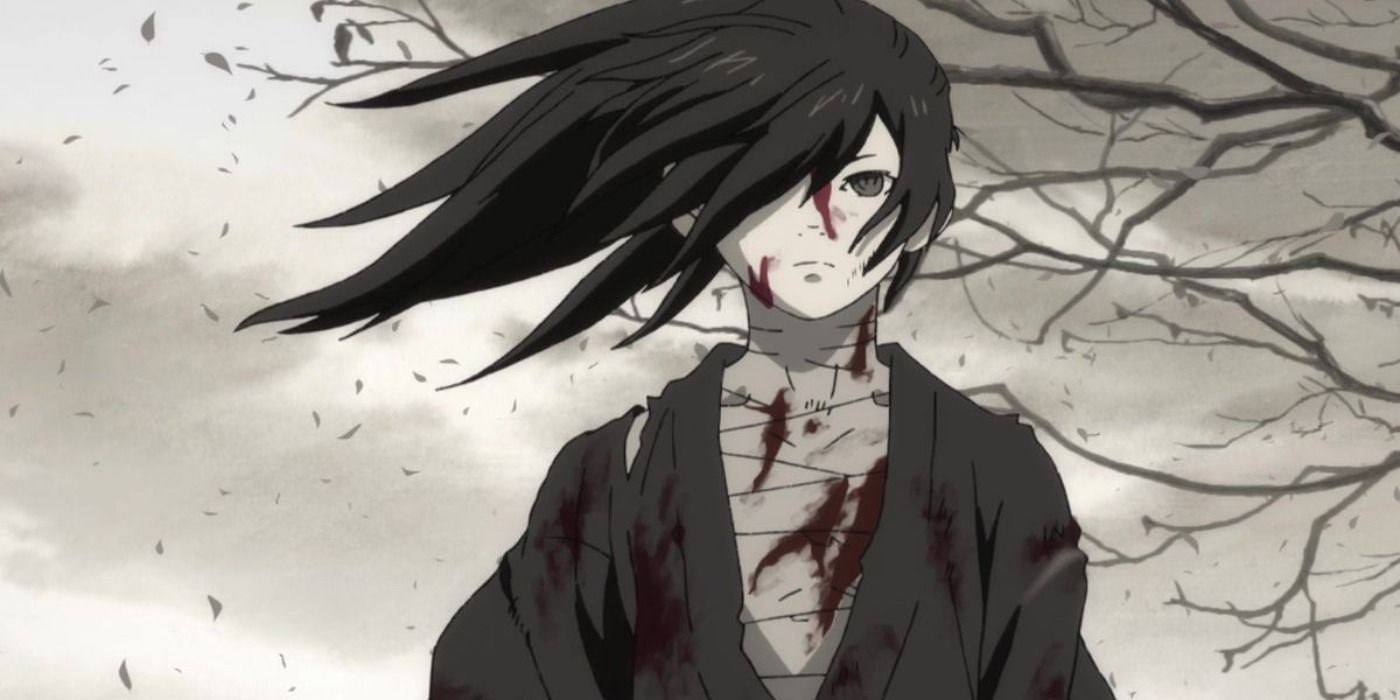
Spoiler-free Synopsis
In the Sengoku era of feudal Japan, a lord strikes an unholy deal with 12 demons. To save his land from famine and war, the lord sacrifices his own newborn son, who is thus born without a face, eyes, ears, limbs, or skin. The lord then orders the child to be killed, but he is spared by a forgiving housemaid. A man who just so happens to specialize in making prosthetic limbs later finds the child and adopts him as his own. Years later, after being trained in combat and having a pair of swords fitted to where his arms would normally be, the boy comes across and slays one of the twelve demons, regaining one of his taken legs in the process. After being christened “Hyakkimaru” by his adoptive father, the boy sets out to slay the remaining 11 demons and regain his stolen body. On his quest, he comes across a street urchin who takes a liking to him, named Dororo.
Why You Should Be Watching
Welcome, everyone, to the “this belongs on Toonami” show of the season. Thanks to superb animation by Studio MAPPA, this is easily one of the season’s best-looking shows airing (odd foot design aside). While it does take a dip in quality every now and then, it more than makes up for it in outstandingly directed action scenes, such as the first time we see Hyakkimaru slay a demon by surgically bringing down an entire bridge on top of it. The mood and tone of the show are great as well, with character moments that flesh out (no pun intended) backstories and personalities and an atmosphere that has its own share of quiet moments to balance out the bloodshed.
The pacing and direction are good too, with the first episode establishing all the key players and later episodes building upon and explaining their various histories. Each episode does predictably follow the two leads going from village to village and facing off against demons that test Hyakkimaru, but not just with him fighting increasingly difficult foes, but him adjusting and adapting to body parts he regains along the way but instead of just him fighting increasingly difficult foes, there’s also the added struggle of him adjusting and adapting (with the episodes of him regaining his hearing being the best example of Hyakkimaru’s ongoing development). If you’re a fan of atmospheric action, Dororo is the must-watch of the season.
Endro!
Genre: Comedy, Slice-of-life, Fantasy
Where to Watch: Crunchyroll, Funimation

Spoiler-free Synopsis
Endro! follows four girls as they attend Adventure School while training to become full-fledged adventurers. Yusha, the leader of the group, dreams of slaying the Demon King and becoming the next in a line of legendary heroes. Though they try to learn the ins and outs of adventuring, the girls’ penchants for mischief, laziness and general absent-mindedness stand in their way of ever reaching the Demon King, leading to repeated comedic antics. Little do they know, however, that the Demon King is closer than they realize.
Why You Should Be Watching
At first glance, Endro! seems like yet another Cute Girls Doing Cute Things show, only with a fantasy skin. The show quickly dismantles this notion, however, through repeated subversions to the genre that, though not Madoka-level deconstructions, keep the show fresh and, more importantly, funny. Our four main girls might all be cute and appealing, but they also exhibit Konosuba-like qualities of idiocy and narcissism that make what would be typical fantasy scenarios feel fresh through how the girls react to and handle them. Endro!’s appealing character designs are largely a result of the show’s general style mixing a pastel palette with rich detail and appealing color combinations. Like many recent CGDCT shows, Yusha, Seira, Fai, and Mei embody the typical pink, purple, yellow, and blue color-thematic scheme; however, the show’s engaging visuals and each character’s distinctly entertaining personality coat a refreshing veneer over a tired character trope. Not only is the show’s moment-to-moment incredibly genuine and fun, but visually pleasing, as well.
The show’s general self-awareness keeps it from feeling sterile or “tropey.” Instead, it plays on standard fantasy tropes, particularly ones found in JRPGs, to great effect. Without delving into spoilers, a particularly memorable episode revolves entirely around pointless early-game fetch quests typical in JRPGs and the girls’ exhaustion at these tasks. It is moments like these that truly make Endro! shine: instances where it pushes up against the fourth wall, against the genre it so firmly places itself in and asks viewers not to harshly judge that genre but laugh alongside it. Endro! is a show for those who want to laugh and feel good, but it’s also a show for those who want to experience a fantasy world that knows it’s a fantasy world. Konosuba meets Comic Girls; it takes the genre framework and humor of the former alongside the visual style and character structure of the latter with the heart and love of laughter of both. Its gags revel in absurdity and its characters in silliness, sending a central message that life isn’t so bad. The Demon Lord will be defeated, everyone will graduate and become adventurers, and we will catch that damn lost cat — we just have to laugh along the way.
Kaguya-Sama: Love is War
Genre: Romance, Highschool, Comedy
Where to Watch: Crunchyroll, Funimation, Hulu
/cdn.vox-cdn.com/uploads/chorus_image/image/62993985/kaguya_sama.0.jpg)
Spoiler-free Synopsis
Shuchiin Academy is where the brightest students in the country go to receive the best education in the country. Kaguya Shinomiya and Miyuki Shirogane are Vice President and President, respectively, of the Student Council which makes them super popular. However, there’s a secret: they’re both crazy about each other but neither one wants to admit it. Both come up with different schemes to make the other admit their feelings and that inevitably either fail or get thrown off by unexpected circumstances.
Why You Should Be Watching
Unlike other saccharine, sweet high school romantic comedies where the two leads are all lovey-dovey, K:LiW eats up that trope and spits it out. You know that old Pat Benatar song from the eighties? This is “Love is a Battlefield” the anime. The fun of each week’s episode is watching two idiots deeply in love engage in a game of matching wits that always wind up failing or being foiled inadvertently by unexpected circumstances. There’s also Shirogane’s frequent ‘OH NO WTF HAVE I DONE?’ faces and of course Kaguya’s smirky ‘How Cute’ expressions that make us laugh too.
And speaking of the two leads, they’re adorable, too. Miyuki comes across as this know-it-all type who hilariously bullshits his way through situations like helping a fellow student with love problems(naturally since he and Kaguya are the heads of the Student Council, they are idolized by all in the school and presumed to be dating. Of course, they couldn’t be more wrong) by pretending he’s a Romeo. Kaguya might be an ice queen on the outside, but inside she can’t help but wonder what Miyuki looks like with Neko ears on. And then there’s Chika, the Council Secretary.
Chika is this season’s best troll. Just when Kaguya or Miyuki start to plan some scheme to make the other admit their feelings enough to go on a date, she steps in and always manages to find a way to inadvertently completely ruin their schemes.
Overall, what makes KS:LiW enjoyable, besides its characters, is the writing and pacing that make each episode zoom by quickly. And even better: it’s directed by the person who did Descending Stories: Showa Genroku Rakugo Shinju, which is one of our favorite series from the past five years.
Magical Girl Spec-Ops Asuka
Genre: Magical Girls, Action, Boobs, and Gore
Where to Watch: Crunchyroll, Funimation

Synopsis
Asuka Otori is a high school student just trying to live a normal life after a childhood of fighting magical beings. As Magical Girl Rapture Asuka and former leader of the 5 surviving magical girls who fought in the war against the Disas, she wants nothing more than to forget the horrors of that war. However, in the aftermath, a world of black market magical items, terrorists, and a mysterious organization threaten to force Asuka out of retirement and back into a world of violence
Why you should be watching
Asuka at first glance appears to be yet another entry in the “dark magical girl” genre that sprung up after Madoka Magica. But that appearance is deceiving because Asuka has its own take and flavor on the time-tested Mahou shoujo.
This is grindhouse-style magical girls. It’s too over-the-the-top in its violence and earnestness to be taken totally seriously. The villains are often vicious stuffed animals or otherwise twisted in amusing ways; they’re ludicrous but remain effective antagonists. The girls wear overly revealing fetish-style outfits that nobody comments on and oh, nobody recognizes them in transformed mode, because of magic. It all works, in a ridiculous way.
One of the most interesting parts of the show, though, is where it chooses to be more nuanced: its handling of PTSD. The show is really like we skipped Season 2; it’s the aftermath of a conflict we didn’t see. The effects of the losses and the lasting trauma it causes the surviving magical girls are actually handled quite well, with a sensitivity you might not expect given the series propensity for bombastic news. It’s a big part of helping the viewer identify with and root for the characters. Asuka, in particular, is a familiar archetype as the hero who wants a peaceful life but feels a responsibility to use her powers for the betterment of those weaker than her, and is thus drawn back into a world of blood and fire.
With enjoyable action scenes, characters worth rooting for or against, and a glorious B-movie sheen to the whole operation, Asuka keeps you invested and entertained. In the end, what more could you need?
The Price of Smiles
Genre: Sci-Fi, War Drama, Tragedy, Mecha
Where to Watch: Crunchyroll

Spoiler-free Synopsis
Life has gotten more complicated ever since Yuki Soleil inherited the throne of the Kingdom of Hariant. Her new responsibilities may be tough, but she has a loving group of advisors and friends to help her through her troubles, but her life is thrown into further chaos when the Grandiga Empire invades.
Stella Shining is a soldier of the Grandiga Empire. She also has her troubles, but she has a tight-knit group of comrades who support each other. Loss is nothing new to Stella, but will she lose something more than comrades in this conflict?
Will both Yuki and Stella make it out of this war in one piece and if they do, will they be able to keep smiling as they did before the war?
Why You Should Be Watching
The Price of Smiles is one of the most surprising and bold anime this season. The show masterfully plays with expectations in a way that will keep you on the edge of your seat every episode.
At first, The Price of Smiles presents itself as a light-hearted slice-of-life show following Yuki with some light mech action thrown in, but it soon turns this set up on its head. Episode two shows us that everything, in the beginning, was a bubble to protect Yuki from the truth, and, unfortunately, this revelation comes crashing down on Yuki. This shocking turn of events hooked us through its boldness and how it made the stakes of the conflict even more engaging. Throughout its seven current episodes, The Price of Smiles has kept us coming back each week to see what new development comes next.
Though this show’s surprises keep us coming back each week, the nuanced writing of the series invests us in its outcome. The show does a fantastic job of fleshing out both sides of the war by giving us enough time with Stella and her relationships with her comrades to show how her team’s duties affect each crew member. This setup gives us insight into how Grandiga operates, but it also gives us an intimate look into the war, as well. Providing insight into both sides of the conflict gives us a tangible face to the hardships and the friendships of both sides of the conflict, which makes you root for both Stella and Yuki, as neither side can be easily classified as “good” or “bad.”
The Prince of Smiles lives up to its name with its excellent writing and bold plot twists — it is a must-watch if you’re looking for a good war drama.
The Promised Neverland
Genre: Mystery, Psychological, Thriller
Where to Watch: Crunchyroll, Funimation, Hulu
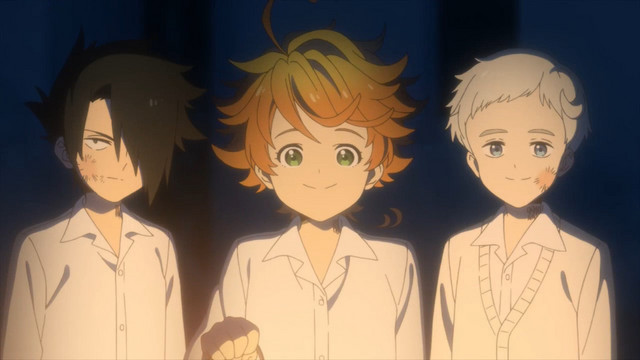
Spoiler-free Synopsis
All is well at Grace Field Orphanage! While the kids have no parents, they have their “mama” who cares for them, and life is well with daily activities like challenging but fun tests and time to play outside. But, there’s a catch: you must not leave – don’t go past the forest and don’t go near the gate. What lies outside the walls of the orphanage, and what happens to the kids when they get adopted? If you haven’t been spoiled already, you’ll find the premise of Neverland to be a simple one yet also effective.
Why You Should Be Watching
There’s nothing quite like a psychological thriller to watch week by week, and with The Promised Neverland we have one of the more unique and engaging thrillers in ages. With fantastic animation, sound design, and likable characters you can root for, The Promised Neverland is our pick of the season in an already impressive lineup. It’s also a season for banger OPs, and Uverworld is rolling with the best of them with “Touch Off.” Neverland is a quintessential example of how to do a show right, hitting on all the hallmarks one expect from a great show: a premise that hooks the viewer into the show immediately, high production values, direction that makes the show consistently engaging to watch, and characters that are fascinating and well-developed to the point that the viewer becomes heavily invested in them, just to name a few examples. The psychological mystery aspects add another level to the show; all these elements combine to make The Promised Neverland immediately engaging and intriguing.
Honorable Mention
(Note: Our honorable mention section is reserved for shows that had significant support but at the same time significant pushback during our debates. In order to represent both sides, we include both for and against opinions for our honorable mentions.)
The Rising of the Shield Hero
Genre: Isekai, Action, Drama
Where to Watch: Crunchyroll, Funimation

Spoiler-free Synopsis
Naofumi Iwatani is your average college student until he finds a mysterious book that transports him to another world, where he discovers he is one of prophesied four heroes meant to save the world from doom. Soon after taking up the mantle of the Shield Hero, he is falsely accused of committing rape. As a pariah with nobody else to rely on, Naofumi buys a sickly demi-human, Raphtalia. With nobody but Raphtalia by his side, Naofumi will use any method, no matter how dirty, to survive the impending apocalypse, and maybe, just maybe, get revenge against all of those who wronged him!
Why You Should Be Watching
While it is an Isekai, a genre filled with power fantasies and harems, Shield Hero turns such things upside down by giving us a hero ignorant of the world he finds himself in, their culture, and how the people see him. To make things worse, he has the worst class and is accused of a horrible crime he didn’t do, making him a pariah that has to use shady and morally objectionable methods in order to keep going forward and survive this life in another world. These factors make the Shield hero and his struggles very sympathetic, mixing them with natural and well-pointed justifications on why he does the things that he does. He buys a slave because he can´t trust people, nor has the money or means to pay mercenaries, yet still needs a partner to rely on. Though rape carries with it a complex history and controversial socio-cultural standing, the show’s use of it shows the weight of Naofumi’s situation — a weight that murder, given its over-representation in today’s media, would not carry.
What’s more interesting is the relationship of the characters and how we can see the different facets of them, not only from Naofumi and Raphtalia; but also from the Bow and Sword Heroes who, while not liking the Shield Hero, aren’t fully on the hate train towards him. The Spear Hero, however, while believing in good, can´t stop being a Casanova and even someone who will believe anything a woman or a friend tells him if it means advancing his own interests. Adding to that the beautiful way the relationship between Raphtalia and Naofumi develops as both need something from the other; the former helps the latter to start trusting again in the people and the world, and maybe that way Naofumi can come back to the good person he was before. Which, in a sense, is all that Shield Hero is about. Gossips and accusations can put any man into the darkest pit but a helping and kind hand can help us return to the light and make everyone see the light that has always been inside of us…Also, Kevin Penkin from Made in the Abyss made the soundtrack and it’s pretty good!
Why You Shouldn’t Be Watching
Shield Hero absolutely has strengths in Naofumi and Raphtalia’s support of one another, and the latter’s development gives thematic structure to each episode. If there is one redeeming reason to watch Shield Hero, it’s for the crafting of Raphtalia and Naofumi’s emotional bonds.
However, this aspect does not entirely mitigate the portrayal of contentious societal issues or the more profound sins of humanity. The inciting rape accusation and the moments of demi-human discrimination are treated as incidental until necessary. Naofumi goes around normally until there is a quick reminder from the populace that the Shield Hero is terrible, Naofumi threatens people with his chomping orange balloons to get his way, and he continues. That lack of pervasiveness means that payoffs never feel like a cathartic moment of acceptance or change. The magnitude of Naofumi’s plight is never clear, despite being told that the whole country scorns him. It feels truncated, so the emotional beats do not land. It is also difficult to ascribe the show any legitimate commentary on the matters to its strength because it does not treat them with any pertinence.
This also applies to the existence of slavery in the world, which some viewers might find harder to stomach as it is the foundation for Raphtalia and Naofumi’s relationship. Their relationship is either a wholesome oasis in the middle of a variety of problems, or her servitude entirely colors her dependency on Naofumi. This makes Shield Hero less a story of her growing agency and mutual trust than a contortion of her subservient ties into affection, conflating ownership with real emotional belonging. It depends on whether the viewer can set aside slavery or not, which underlines the problem with Shield Hero’s approach to it.
By not effectively folding the ramifications of these societal elements into the story, the characterization of the supporting cast and their hatred of the Shield Hero comes off as one-note, and after a while, boring. Charitably, there is a point to make about blind hatred, but as characters, they are uninteresting, especially juxtaposed with the lackluster portrayal of their hate. Furthermore, the hints of unraveling hatred are consequently staccato rather than smoothly written.
Frankly, the enemies are boring too. We realize this is gamified fantasy, but the initial wild hordes have dull designs. Maybe this is to illustrate that mundane creatures are a threat, but they do not feel very threatening in the moment, so Naofumi heroically blocking attacks does not often come off as that heroic. The lack of struggle hurts the action and the excitement of seeing his ingenuity, which is a defining trait. The show has not made much of its “gamification” in the context of this being a very real fantasy world, or the premise of introducing parallel worlds, so far.
Until it does so, the menus screens are grafted on haphazardly, which could be said of many conflicting aspects in Shield Hero. These issues bring down a problematic yet pretty tautly written central relationship. The Rising of the Shield Hero is standard isekai with very questionable storytelling choices and execution. May it make like its eponymous hero and rise in our estimation. Fingers crossed.
Dishonorable Mention
(This section was added as a joke due to a running gag among the authors about the “popularity” of this series. Read at your own risk.)
W’z
Genre: Action, Trash
Where to Watch: Crunchyroll, Hidive

Spoiler Free Synopsis
Set 10 years after the events of Hand shakers, Yukiya is an aspiring DJ who posts his work online. But he also is a hand shaker, so he too can go to the Ziggurat, and must do battle with other hand shakers who are interested in his mysterious power.
Why You Should Be Watching, Even Though You Probably Shouldn’t
W’z is a must-watch for one reason which might be the best reason in the history of this anime collaboration: watching it and all of its failures allows you to appreciate everything that other good anime does well, and W’z takes all of that and does it in the most spectacularly terrible way.
The art is generic as generic can be, but with the single strangest and most ill-conceived color scheme that completely clashes against each other in the worst way possible. You literally cannot see half the things that are happening through the strangeness of these design choices. Especially in the Ziggurat — it’s like if you took a broken kaleidoscope and then shot it through a potato. Which doesn’t help since … It’s all 3D CG! There have been some decent 3D CG anime in recent years, but this isn’t one of them. Nor does the constant motion of the camera aid in this regard, as the panning, zooming, and rotating through every second of animation means that you very likely will get dizzy and nauseous while watching. After finishing an episode, you can stare at a blank wall and watch it move. This effect is only heightened in its nonsensical fight scenes. With a camera that constantly moves, backgrounds that are constantly and randomly changing color schemes for no reason, and as many CG effects as humanly possible stuffed on screen, viewers never get a sense of what’s happening or where it’s even happening. No surprise, all of these fight scenes fall totally flat on their face.
So, presentation-wise, this is near the very bottom. But the story itself does it no favors with the most boring shounen anime plot you could conjure up. The mysterious boy has mysterious power because girls fall all over themselves for him also because. Multiple people want to say mysterious power because ??? more power. People get into big stupid CG fights and then the fights end for no explicit reason other than, “time’s up, let’s now move on to another exposition scene in which nothing actually gets explained again”. Even the quiet moments are filled with the same nonsense. Consider an entire episode where 10 different characters from Hand Shakers gather in a cafe and spend the entire episode essentially only discussing that the main character was born in the Ziggurat. Yes, 20 full minutes are spent discussing one plot point the viewers already knew about very well and rehashing it over and over again until it’s time for the credits. There’s no deeper reason for anything happening because this anime is not interested in things like an interesting story or characters you can identify with beyond “I’m also a boy.”
Now, why would this dismal anime still be watched? You name it, W’z fails at every single important aspect of what makes good, or even mediocre, anime. But because it does, W’z is required viewing because it will make you appreciate everything you’ve ever seen and ever will see. The entries above have talked about things like writing, character development and interaction, pacing, comedy, and action sequences as reasons for why you should be watching those shows. W’z shows you what an anime that does none of these things well is like. You will grow as a consumer of anime, as a consumer of artistic media, and you will grow as a person, and there’s no other anime this season that can say that.

